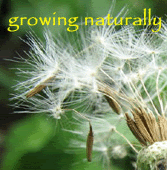Partly Sunny, Sixty something
The life of Tussilago
Family: Asteraceae
European native
"the son before the father" Very early in the spring, coltsfoot develops flat orange flower heads, but only after they eventually wither do the broad, hoof-shaped, sea-green leaves develop. Since the flowers and leaves appear at different times, they are collected separately. Coltsfoot is found along brooks and in wet places and moist clayey soil along roadsides
The flowers should be gathered before they have fully bloomed (end of February to April) and dried carefully in the shade. The leavesare best collected between May and June. They should be chopped up before theyare dried and stored. The fresh leaves can be used until autumn.







Constituents: Coltsfoot contains flavonoids, about 8% mucilage (consisting of polysaccharides), 10% tannins, pyrrolizidine alkaloids, vitamin C, and zinc. There are useful levels of zinc in the leaves. This mineral has been shown to have marked anti-inflammatory effects. The pyrrolizidine alkaloids may have a toxic effect on the liver, but are largely destroyed when the parts are boiled to make a decoction. The polysaccharides are anti-inflammatory and immunostimulant. The flavonoids are anti-inflammatory and antispasmodic.
Doctrine of SIgnatures: Coltsfoot, the dried leaves and/or flower heads of Tussilago farfara L., is one of those plants whose botanical name reflects its medicinal application. Tussilago derives from the Latin tussis, meaning cough, and coltsfoot has long been used to treat that affliction.
Coltsfoot combines a soothing expectorant effect with an anti-spasmodic action. Coltsfoot may be used in chronic or acute bronchitis, irritating coughs, whooping coughs and asthma. Its soothing expectorant action gives Coltsfoot a role in most respiratory conditions, including the chronic states of emphysema. As a mild diuretic it has been used in cystitis. The fresh bruised leaves can be applied to boils, abscesses and suppurating ulcers.
A note regarding smoking of this plant: Since the principal active ingredient in the plant is a throat-soothing mucilage, smoking coltsfoot is not rational therapy. The mucilage would be destroyed by burning, and the effect of smoke on already irritated mucous membranes would be increased irritation. Inhaling the vapors from coltsfoot leaves placed in a pan of simmering water s again without value. The useful mucilage is not volatile and would not reach the affected tissues.
It combines well with licorice, thyme, and black cherry. In China, coltsfoot is classified as a "warming" herb that helps relieve coughing and wheezing.
Safety
Over the years, coltsfoot has been a very popular folk remedy for coughs and bronchial congestion. As early as the first century, coltsfoot was recommneded for dry coughs and for breathing problems by the Greek doctor Dioscorides. However a study carried out in Japan revealed that the hepatotoxic (poisonous to the liver) pyrrolizidine alkaloid senkirkine to be present in relatively small amounts (0.015 percent). Continued or prolonged exposure to these pyrrolizidine alkaloids may have a cumulative effect. For some time it was hoped that the rest of the plant might be devoid of pyrrolizidine alkaloids. However, a subsequent investigation of coltsfoot leaves showed senkirkine to be present in them as well.
Here are some safety considerations:
-Coltsfoot flowers should not be used.
-The herb should not be taken by pregnant or breast-feeding women.
-It should not be given to children under age 6.
-Some countries have legal restrictions regarding coltsfoot availablity and usage. The USDA classifies coltsfoot as an herb of "unknown safety" due to the pyrrolizidine alkaloids. The amount of these alkaloids is extremely small, though, and the beneficial effects are generally believed to outweigh the risk.
-It is recommended that coltsfoot tea or syrup not be used for more than 4-6 weeks at a time.
If readers prefer to try alternative very safe herbal demulcent (soothing agent), try slippery elm bark or marshmallow root









No comments:
Post a Comment